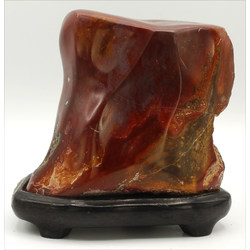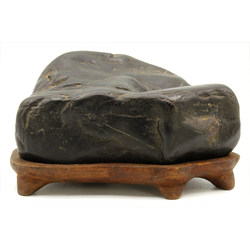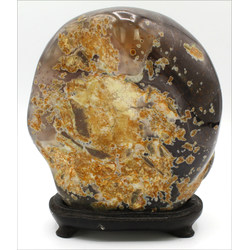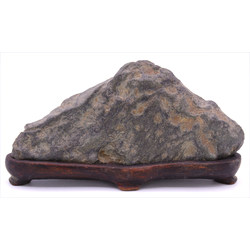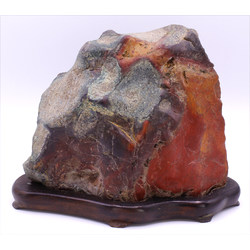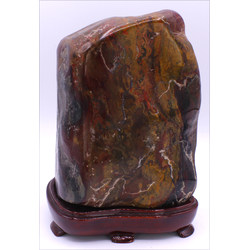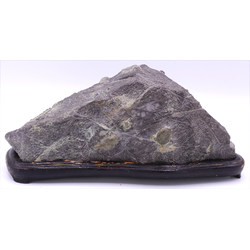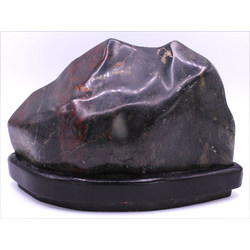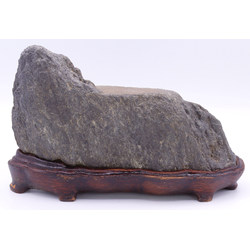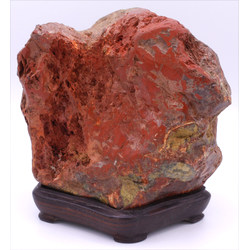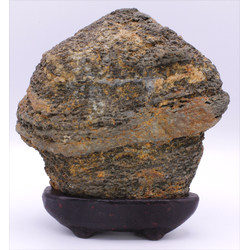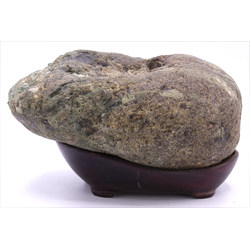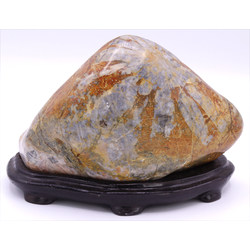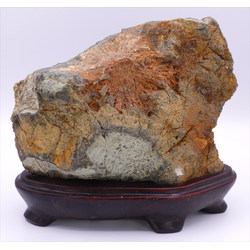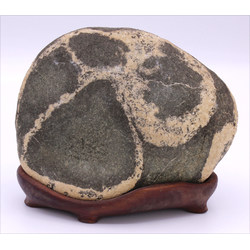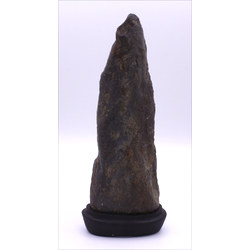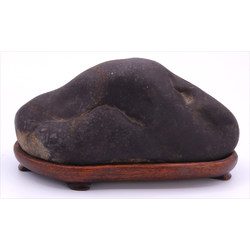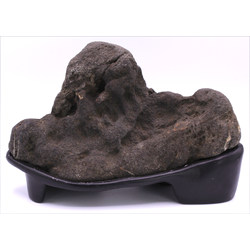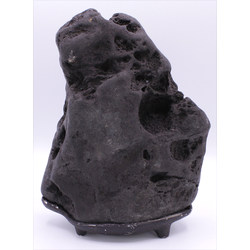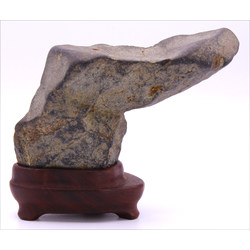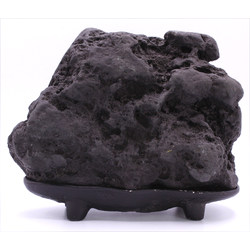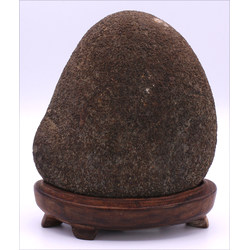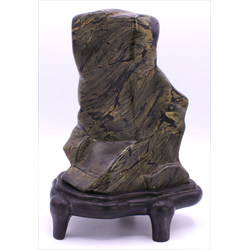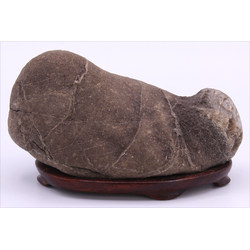SUISEKI
Suiseki is the Japanese art of contemplating stones, which are small in size and created in a natural way. They are usually reminiscent of a landscape or an object associated with nature.
Suisekis are usually displayed on carved wooden stands (dai) or flat trays (suiban) and are sometimes accompanied by bonsai; one way of combining the two is the sekijoju style, roots on rock, or the ishitsuki style, bonsai hugging a rock.
Suisekis can be classified according to various systems:
By the place of origin, it is not always possible to determine with certainty the origin of some stones, but there are some Japanese localities known for having incredible suisekis, such as the stones of the Kamogawa river.
By shape, among which we can find mountain stones (yama-gata-ishi), plateau (dan-seki), waterfall (taki-shi), island (shimagata-ishi), hut (yagata-ishi), boat (funagata-ishi), even in the shape of an animal (dobutsu-seki).
By the colour and by what it suggests to the beholder, such as dawn, dusk or the seasons of the year. Thus we find black stones (kuro-ishi), jet (maguro-ishi), red (aka-ishi), blue (ao-ishi), golden (ogon-seki)... and of various mixed colours.
In terms of surface patterns (mon-seki), the most common are those with plant patterns (kigata-ishi), such as chrysanthemums (kiku-ishi) and herbs (kusagata-ishi), but they can also have patterns that evoke the sun (higata-ishi), the moon (tsukigata-ishi), the stars (hoshigata-ishi), snow (yukigata-ishi), etc., and in general patterns related to nature.

